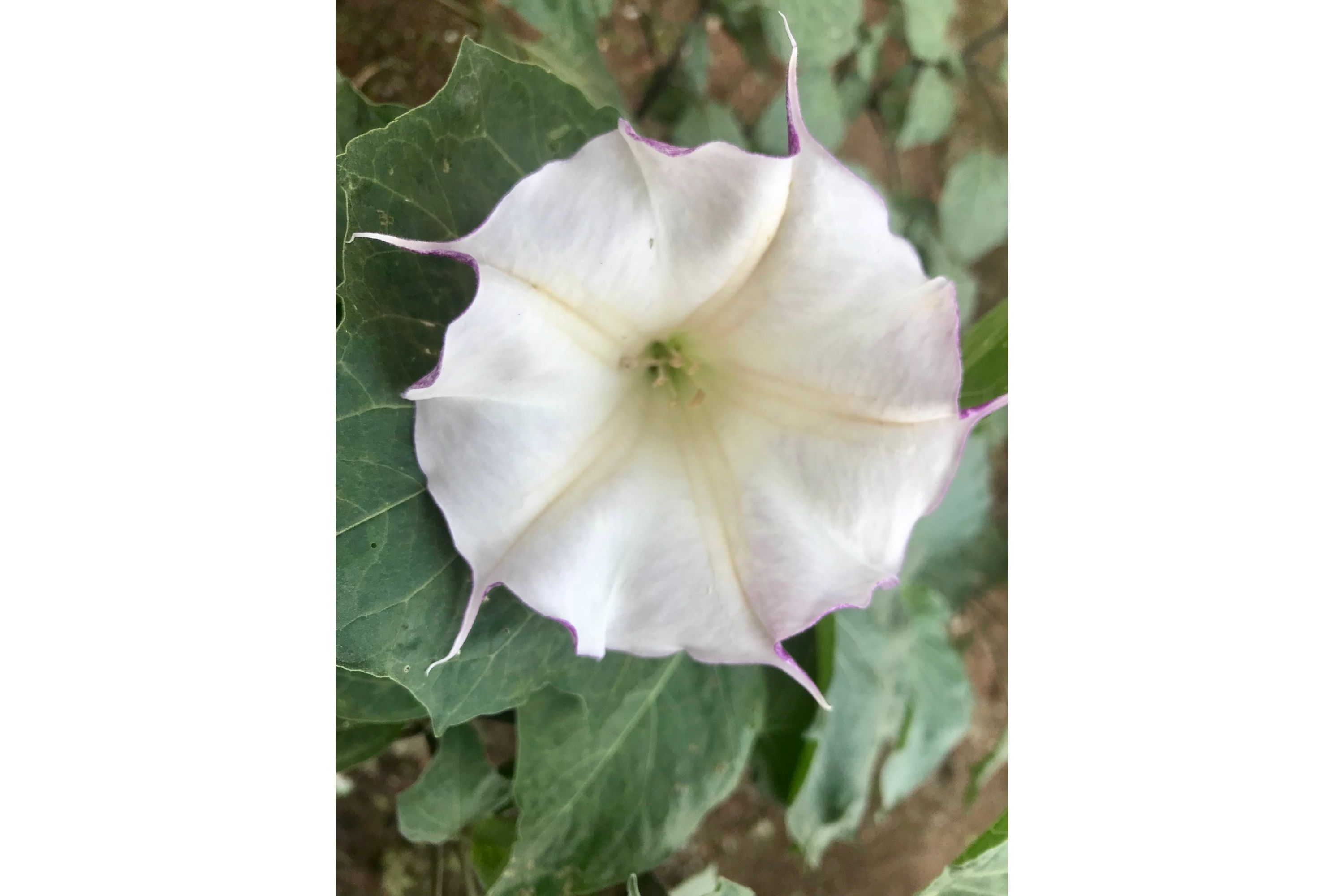Datura
(Datura leichhardtii)

Description
Datura leichhardtii is a species of thorn apple in the genus Datura. In 1844, Ludwig Leichhardt is said to have discovered this species in Australia. Ferdinand von Mueller gave it the name Datura leichhardtii when he published his first description of it in 1855. The natural habitat of this species covered an area from Mexico to Guatemala. It was taken to Australia, where today is widespread in Queensland, the Northern Territory and New South Wales. The plant is extremely fond of heat, and its preferred habitat is close to rivers and streams. Datura leichhardtii grows into a bush from 1.5 to 3 ft tall. The plants are green and a bit furry, with inconspicuous yellowish white flowers. The spiny seed capsule is about 1.5 in. in diameter. The plant is not found in cultivation, because its flowers have no ornamental value. All parts of Datura plants contain dangerous levels of poison and may be fatal if ingested by humans or other animals, including livestock and pets. In some places it is prohibited to buy, sell or cultivate Datura plants. Datura is a genus of nine species of poisonous, vespertine-flowering plants belonging to the nightshade family Solanaceae. They are commonly known as thornapples or jimsonweeds, but are also known as devil's trumpets (not to be confused with angel's trumpets, which are placed in the closely related genus Brugmansia). Other English common names include moonflower, devil's weed, and hell's bells. All species of Datura are poisonous and potentially psychoactive, especially their seeds and flowers, which can cause respiratory depression, arrhythmias, fever, delirium, hallucinations, anticholinergic syndrome, psychosis, and even death if taken internally. Due to their effects and symptoms, they have occasionally been used not only as poisons, but also as hallucinogens by various groups throughout history. Traditionally, psychoactive administration of Datura species has often been associated with witchcraft and sorcery or similar practices in many cultures, including the Western world. Certain common Datura species have also been used ritualistically as entheogens by some Native American groups.
Taxonomic tree:







